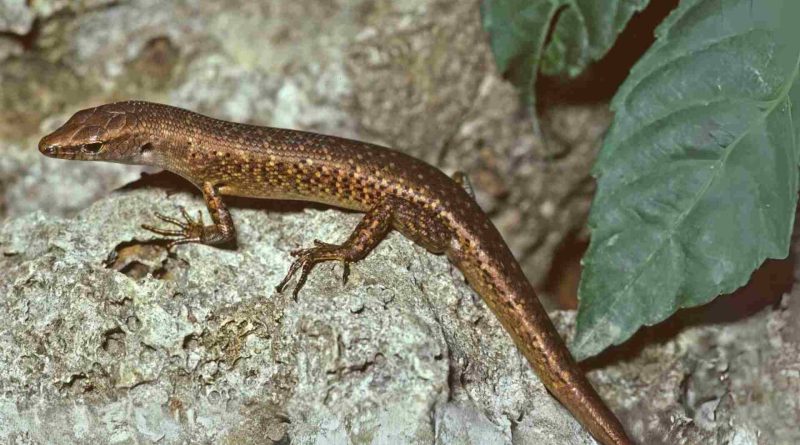Unveiling Australia’s Devastating Extinction Crisis: A Call to Action for Wildlife Preservation
Australia has officially recognized the demise of 13 more species, marking a significant loss, including the initial reptile, since colonization.
Among the casualties are the Christmas Island forest skink and a dozen mammals, such as the desert bettong, broad-cheeked hopping mouse, and Nullarbor barred bandicoot.
The Australian government’s declaration underscores the country’s unfortunate distinction as the global leader in mammalian extinction, elevating the tally of vanished mammals to 34.
The extinction of these species doesn’t come as a shock. Nearly all the mammalian extinctions are historical, occurring predominantly between the 1850s and 1950s.
However, the list includes two recent losses, both originating from Christmas Island in the Indian Ocean.
As previously reported by Guardian Australia, the demise of the last Christmas Island pipistrelle, a bat species, transpired in 2009. Subsequently, the sole surviving Christmas Island forest skink, representing the initial Australian reptilian loss, vanished in 2014. The International Union has documented these extinctions for Conservation of Nature (IUCN).
The updated roster means over 10% of the 320 indigenous land mammals existing in Australia in 1788 have disappeared.
Suzanne Milthorpe from The Wilderness Society remarks that no other nation, affluent or impoverished, bears a similar burden in mammalian extinction. According to her, Haiti follows Australia on the IUCN’s list, with a total of nine mammalian extinctions.
Professor John Woinarski, a conservation biologist at Charles Darwin University who contributed to documenting the plight of many newly listed extinct species, describes the listings as “humbling and sobering.”
He emphasizes that extinction becomes a probable outcome once a species is categorized as threatened, underscoring the imperative of effective conservation measures. “It is crucial to acknowledge these losses and recognize that inadequate conservation efforts lead to extinction,” he emphasizes.
The confirmed historic mammalian extinctions include the desert bettong, Nullarbor dwarf bettong, Capricorn rabbit-rat, broad-cheeked hopping mouse, Liverpool Plains striped bandicoot, marl, south-eastern striped bandicoot, Nullarbor barred bandicoot, long-eared mouse, blue-grey mouse, and Percy Island flying fox.
According to Woinarski, feral cats are the primary culprits behind most of these extinctions, although introduced foxes, habitat destruction, and wildfires may also have contributed. He underscores that no other country has experienced even remotely close to the number of mammalian extinctions witnessed in Australia over the past two centuries.
Given the scarcity of museum records, documenting these extinctions often relies on insights shared by Indigenous elders residing in remote regions who have directly witnessed these losses.
While around 100 endemic Australian species have been declared extinct by the government or the IUCN, Woinarski suggests the actual figure could exceed tenfold once extinct invertebrates are accounted for. He points out that at least 50 invertebrate species on Christmas Island alone haven’t been sighted for over a century, likely indicating their extinction.
He laments the first recorded modern extinction of an Australian reptile as a regrettable milestone. The demise of the Christmas Island forest skink can be attributed to the accidental introduction of a predator from Asia, the wolf snake, in the 1970s.
Regarding the extinction of the Christmas Island pipistrelle, Woinarski criticizes the lack of government intervention despite clear indications of its rapid decline for two decades before its extinction. He notes the absence of an inquiry to investigate the circumstances surrounding its demise, emphasizing that it was a species that should have been saved.
Milthorpe, the Wilderness Society’s national environment laws campaign manager, views the updated list as a stark reminder of Australia’s environmental performance, solidifying its status as a global leader in mammalian extinctions.
She urges Environment Minister Sussan Ley to respond more decisively, particularly following a review of the Environment Protection and Biodiversity Conservation (EPBC) Act by Graeme Samuel, which highlighted its ineffectiveness and the urgent need for reforms.
Ley’s spokesperson highlights the minister’s efforts in overseeing a comprehensive review of the historical extinction list to provide an accurate record of Australia’s mammalian population, emphasizing the significance of such records in improving conservation efforts.
The government has allocated over $535 million to support projects benefiting threatened species and ecosystems since 2014, preparing a 10-year strategy for threatened species and establishing new predator-free sanctuaries.
Labor’s environment spokeswoman, Terri Butler, criticizes the Coalition for presiding over a worsening extinction crisis and cutting funding to the environment department since taking office. She accuses the government of lacking solutions and concern for the crisis at hand.
A recent study by 38 scientists across Australia and Antarctica has identified 19 ecosystems on the brink of collapse due to human impact, underscoring the urgent need for intervention to prevent their irreversible loss.

